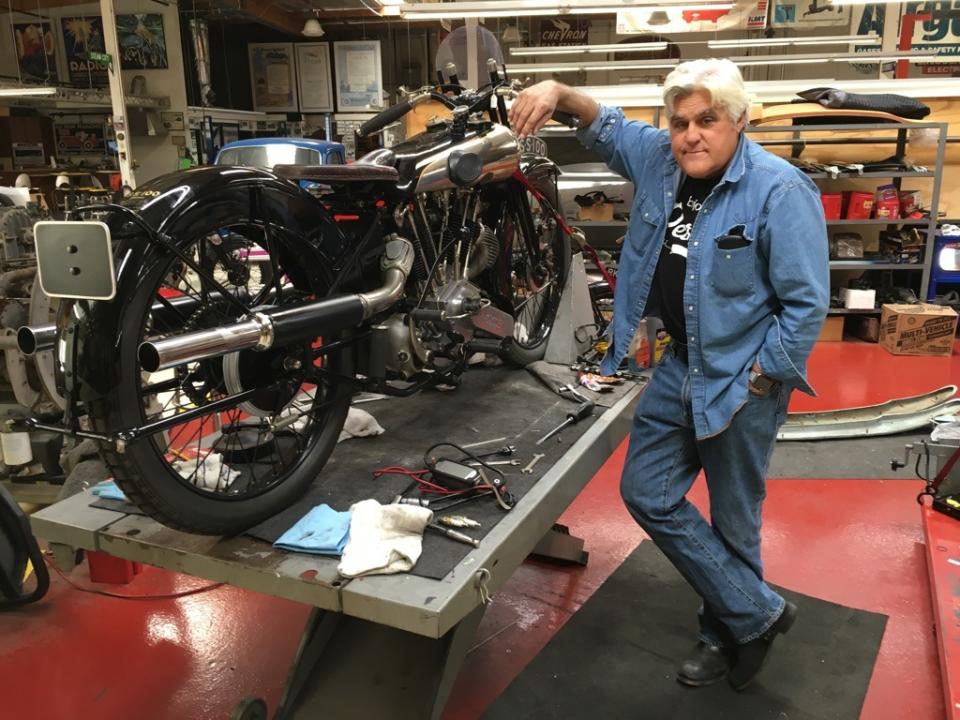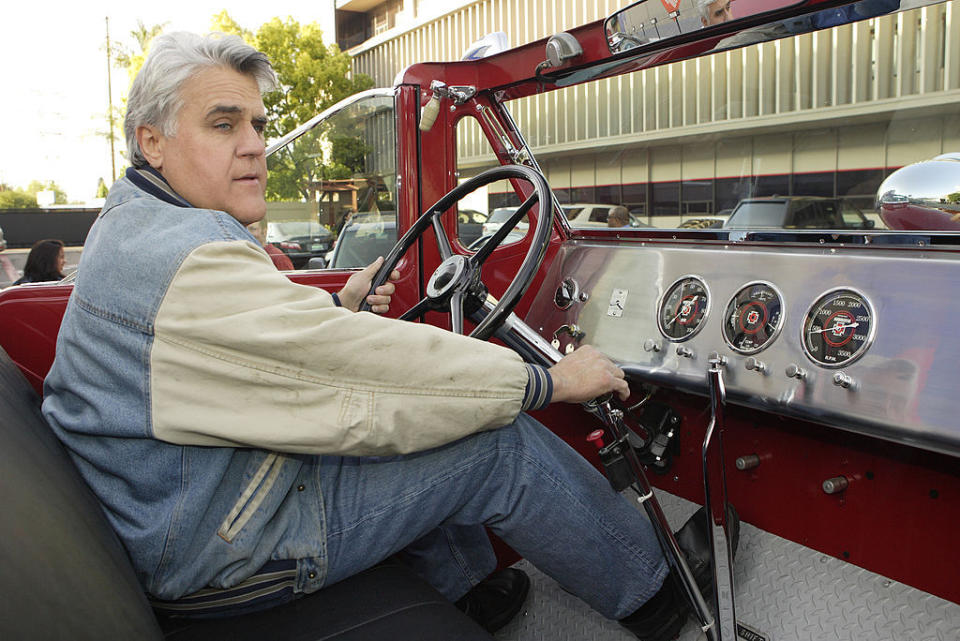Jay Leno’s Back In The Driver’s Seat

For more than two decades, Jay Leno drove a different car to work. That job, hosting NBC’s venerable “Tonight Show” in Burbank not far from his expansive Big Dog Garage, paid him more than enough to keep him in exotic sheetmetal. But where for many celebrities collecting cars is a mere scorecard of showbiz success, for Leno—whose pre-fame gigs included wrenching at a Boston-area garage—it’s the grounding end to his famous means.
“Look, I love this,” says Leno, 65, sitting at a messy desk inside one of three airplane hangars that house his dazzling assortment of some 140 cars and nearly 120 motorcycles, from turn of the 20th-century steam vehicles to the latest in exotic rockets. More museum than storage facility, cars are organized by make or nationality, often with accompanying advertisements and other related paraphernalia. (In one nook, there’s a movie-screen sized poster for a post-war Buick Roadmaster looming over an actual Buick Roadmaster.)
“Comedy is subjective. Some people think you’re hilarious and some people think you suck, and they’re both correct. But when something’s broken and you fix it, no one can say it’s not running,” he says, running a hand through his white mane. “Besides, when you work with your hands, you get an appreciation for how easy it is to make money in show business. I mean, you take a transmission out, your hands are all cut up, and maybe you make 80 bucks.”
Leno is relaxed in this place, an unmarked facility by an airport runway. There are half a dozen guys in his employ who are busy working on many cars, ranging from a ‘70s Porsche 911 that needs a solid going through to what looks like a stunning shell of a Briggs Cunningham C-3 (”That was $15,000 new, in the early ‘50s,” Leno says, eyebrows arching) sports car. Keeping the men company are a dog and some of the most beautiful four-wheeled machines every manufactured, from a pride of Lamborghini Miuras to a squad of rakish Bugattis, from a Porsche Carrera GT that Leno topped 200 mph in to stately selection of Packards.

The cars’ owner is here daily when not on the road doing more than 100 stand-ups gigs a year, a routine he also kept up during his “Tonight Show” years. And soon he’ll head to Oslo, Norway, to host a Nobel Prize concert. Lazy, Leno is not.
In fact, he’s recently added a new if familiar job to the line-up as host of “Jay Leno’s Garage” on CNBC, an offshoot of the popular video-filled website by the same name. After dipping a toe in those cable waters in 2014, he returned with multiple episodes this fall (airing Wednesdays at 10 p.m.) and recently was asked to film 12 more shows that will appear in 2016.
The hour-long episodes are vintage Leno: straight-forward without taking themselves too seriously. He’s drag-raced with a pro, done donuts with fellow comedian Tim Allen, talked shop with Mario Andretti and even gotten to sit down with a very reclusive auto enthusiast.
“I called up Francis (Ford Coppola, director of “The Godfather” trilogy, “Apocalypse Now” and other classics of American cinema) knowing that he’d never done the ‘Tonight Show’ or anything like that, and just said, ‘This is about cars and motorcycles. No show biz, no personal life. Just cars and bikes.’ And he said, ‘Fine, I’m in.’”

With that, Leno and his small crew were off to the director’s winery in Napa, where they talked like old friends. “Well, he’s old school Italian, and I’m Italian, so in many ways it was like talking to my uncles,” Leno says with a laugh. “Did you know that his father played in Henry Ford’s orchestra, and he was named after Ford? He loves cars. He made ‘Tucker’ after all. He has a few of those, some Citroens, an EV-1 (electric car), a Packard. He told me about winning some early (film) award, and racing out and buying an Alfa (Romeo). I really enjoyed him.”

 Yahoo Autos
Yahoo Autos 